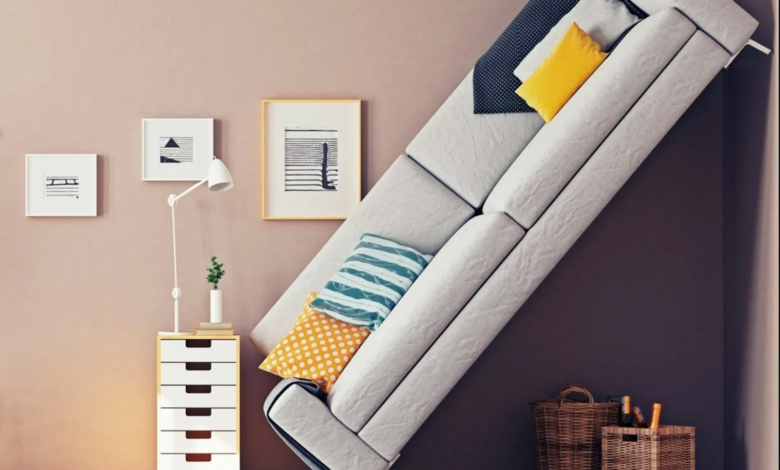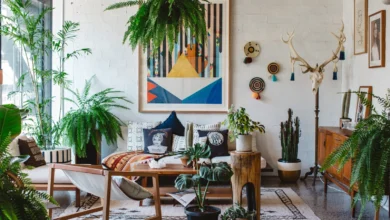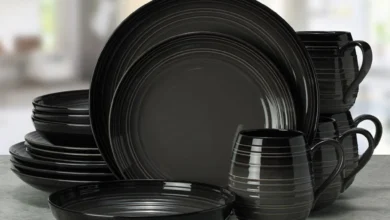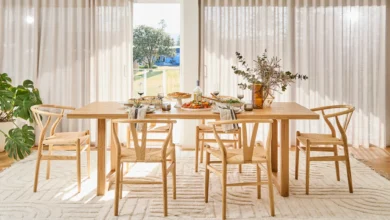7 Common Mistakes in Interior Design That You Should Stop Making and How to Create a Stylish, Modern Home by Interior Architects London

Interior design is the art of shaping a space to create a harmonious balance between aesthetics, functionality, and comfort. Whether you’re redecorating a single room or transforming an entire home, achieving that perfect blend of style and practicality can be tricky. Many people, even with the best of intentions, often make mistakes that undermine their design efforts. The key to avoiding these pitfalls is understanding what to avoid and how to correct these errors to create a space that is not only modern but also seamless in style and comfort.
In this article, we will explore seven common mistakes in interior design that you should stop making, offer tips on how to make your space stylish and modern, and guide you on what styles to use and how to blend them seamlessly.
1. Ignoring the Function of the Space
One of the most frequent mistakes in interior design is neglecting the primary function of the space. Many people become so fixated on aesthetics that they forget about the practical needs of the room. For example, designing a living room solely for show without considering the seating arrangement, lighting, or storage needs can result in a space that looks great but is uncomfortable and impractical.
To remedy this, consider the purpose of each room before you start the design process. Whether it’s a living room, bedroom, or kitchen, think about how you and your family use the space. When designing for functionality, Interior Architects London recommend starting with practical elements such as furniture layout, storage solutions, and lighting before moving on to aesthetic choices like color schemes and decor.
2. Overstuffing the Space with Furniture
Another common mistake is overcrowding a room with too much furniture. Many people try to fill every corner of a room with large pieces, believing that more furniture equals better design. However, this often leads to a cramped and cluttered look that feels overwhelming.
Interior Architects London suggest focusing on a few key pieces that serve both style and function. Choose furniture that complements the size of the room, and ensure there is enough space to move around freely. Minimalism, when applied thoughtfully, can help a space feel more open and modern. Leave enough negative space for a room to breathe, which is crucial for creating a stylish and contemporary look.
3. Choosing the Wrong Color Palette
The color palette is one of the most important aspects of interior design, and yet, many people make the mistake of choosing colors that clash or fail to harmonize with the rest of the home. Bold or trendy colors can be tempting, but they can quickly become overwhelming or feel dated.
A solution to this mistake is selecting a timeless, neutral palette that offers versatility. Neutrals such as grays, whites, and beiges provide a clean backdrop that can easily be enhanced with accent colors. Interior Architects London recommend incorporating pops of color through accessories like cushions, rugs, and artwork, which can be easily updated if trends or your preferences change. This approach keeps the space feeling fresh and modern without committing to a color that could go out of style.
4. Poor Lighting Choices
Lighting is often an afterthought in interior design, but it plays a crucial role in setting the mood and functionality of a space. One common mistake is relying on a single overhead light source, which can cast harsh shadows and create an unwelcoming atmosphere. Poor lighting can also make even the most stylish rooms feel gloomy and uninviting.
To correct this, Interior Architects London advise using a mix of lighting sources to create a layered effect. Ambient lighting, task lighting, and accent lighting should all work together to enhance the room’s overall feel. For example, a combination of floor lamps, wall sconces, and pendant lights can add depth to a living room. Also, consider the color temperature of your lights—warmer hues are great for creating cozy spaces, while cooler tones are better for work areas.
FOR MORE INFORMATION CLICK HERE : skydiving in dubai
5. Overlooking Texture and Layering
While color and furniture get a lot of attention, texture is often an overlooked element in interior design. A room filled with flat, smooth surfaces can feel cold and impersonal, even if the design is technically correct. Failing to incorporate a variety of textures and layers results in a space that lacks depth and warmth.
The key is to balance different materials to create a visually engaging space. Interior Architects London recommend layering textiles such as rugs, cushions, and throws made from different materials like linen, wool, and velvet to add dimension. Incorporating natural elements like wood, stone, and metal can also help break up monotony and add character to a room. A thoughtful combination of textures can instantly elevate your home’s design and make it feel more luxurious and modern.
6. Neglecting the Importance of Scale and Proportion
Another design mistake that can ruin the flow of a room is ignoring the scale and proportion of furniture and decor. Choosing furniture that is too large or too small for a room can make the space feel either cramped or awkwardly empty. Similarly, placing too many small decor items can make the room look cluttered rather than cohesive.
To avoid this issue, Interior Architects London suggests measuring your space before purchasing any furniture or decor. Opt for a mix of larger statement pieces, such as a sofa or dining table, and smaller accent items that complement the room’s scale. Additionally, keeping a balanced visual weight among your furniture will create a more harmonious and stylish interior. For example, pairing a large sectional with a smaller coffee table or delicate side tables can maintain proportion without overwhelming the room.
7. Forgetting About Personal Touches
Finally, one of the biggest mistakes people make in interior design is creating a space that looks beautiful but lacks personality. It’s easy to get caught up in following design trends or replicating what you see in magazines, but your home should be a reflection of your unique style and personality. Without personal touches, a room can feel like a showroom rather than a lived-in space.
Interior Architects London encourage homeowners to incorporate elements that speak to their personal experiences and interests. Whether it’s through artwork, family photos, or travel souvenirs, adding these personal touches makes a home feel more inviting and authentic. The key is finding a balance between style and personalization. While it’s important to follow design principles, your space should also tell a story about who you are and what you love.
Making Your Home Stylish and Modern: What Styles to Use
Now that we’ve covered the common mistakes in interior design, let’s discuss how to achieve a modern and stylish look by selecting the right design styles. Here are a few styles that have stood the test of time and continue to offer a contemporary appeal:
- Minimalism: Characterized by clean lines, a neutral color palette, and uncluttered spaces, minimalism remains one of the most popular modern design styles. It emphasizes simplicity and functionality, allowing for a calm and serene atmosphere. Minimalist spaces are also incredibly flexible, making it easy to incorporate other styles or add personal touches.
- Scandinavian: With its focus on light, airy spaces, natural materials, and functional design, the Scandinavian style is perfect for creating a modern, inviting home. It combines minimalism with warmth by using cozy textiles and light wood tones, making it ideal for those who want a sleek yet welcoming environment.
- Industrial: For those who prefer a more urban and edgy feel, the industrial style is a great option. Exposed brick, metal, and concrete elements are often paired with modern furniture to create a raw yet sophisticated look. This style is especially popular in lofts and urban settings but can be adapted for various living spaces.
- Mid-Century Modern: With its iconic furniture designs and bold use of color, mid-century modern is a timeless style that continues to be a favorite for those seeking a modern aesthetic. This style features clean lines, organic shapes, and functional forms, making it both stylish and practical.
- Eclectic: If you enjoy mixing different styles and eras, eclectic design might be for you. This style allows for a more personalized approach, combining elements from various design aesthetics to create a cohesive yet unique look. The key to successful eclectic design is finding balance and ensuring that the pieces you choose complement one another.
Blending Styles Seamlessly
One of the most important aspects of creating a modern, stylish home is the ability to blend different styles seamlessly. Interior Architects London emphasizes the importance of consistency and balance when combining design styles. Here are a few tips for achieving that perfect blend:
- Choose a unifying color palette: When mixing styles, a cohesive color palette can help tie everything together. Even if your furniture and decor come from different eras or styles, a consistent color scheme will create visual harmony.
- Balance old and new: Blending vintage and modern pieces is a great way to add character to your space. The key is to keep a balanced ratio—mix old and new elements in equal measure to avoid making the space feel outdated or too trendy.
- Focus on proportion: When combining styles, pay attention to the proportion of each piece. A large, ornate vintage sofa paired with a sleek, modern coffee table can create visual contrast without overwhelming the room.
By avoiding common interior design mistakes and following these guidelines, you can create a stylish, modern home that reflects your unique personality. Interior Architects London have helped countless homeowners transform their spaces, and with these tips, you can achieve a seamless blend of style and function in your own home.




